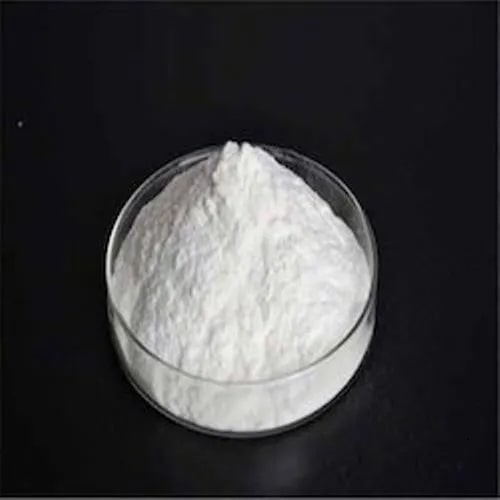Pharmafile spoke to National Cancer Institute's (NCI) Jason Christofaro and Sherry Ansher regarding the development of an agent formulary and its role as part of the wider Moonshot Initiative. The Formulary encourages companies to share their agents to initiate combination research to the mutual benefit of the owners of the drugs and, potentially, the public.
Could you explain the work of the NCI Formulary and how it could speed up the process of discovering potential combination therapies to be used in cancer treatment?
JC: The NCI’s Cancer Therapy Evaluation Program is the largest sponsor of cancer clinical studies in the world. We are the IND [Investigational New Drug] holders and then we have a large cooperative group network that conduct studies. We have collaborations with many large pharmaceutical companies to do these studies under our IND. It came to our attention, and has been developing over the last few years, that researchers would like to have access to agents under their own INDs to do particular studies and particular combination studies. The purpose of the formulary is to leverage our existing drug distribution and agreement network to enable researchers to have access to a large panoply of drugs for their own IND initiated studies. We are partnering with a bunch of companies and they are providing agents to the formulary and then investigators that are in cancer centers can apply for access to these agents. We are cutting out a lot of the middle man, especially the negotiating middle man – where you have to negotiate with separate parties, especially in combination studies. We are using our drug distribution network to try and ease the transfer of agents to try and make these studies happen and, when they do happen, happen a lot faster.
Could you explain the NCI Formulary’s part of the wider moonshot push?
JC: The purpose of the moonshot is to create a framework for faster and more efficient cancer discovery. This, the NCI formulary, fits right into that and one of the great things about this program is that it is relatively minimal funding. It leverages something that we already had, it uses a process that we already had and doesn’t use much in terms of resources – other than our time. I think that is why it has, in particular, worked very well.
SA: I think a lot of the moonshot and the Blue Ribbon Panel were to brainstorm and come up with ideas that could be put into place in relatively short order to facilitate and expedite cancer research. This is one of the proposals that came following this and one that we were able to, because of our existing infrastructure, get up and off the ground relatively quickly.
How have the pharmaceutical companies you have approached react to the idea of allowing other parties access to their commercial drugs? In turn, what do they get out of it?
SA: The pharmaceutical companies have been keen on the idea. We have been working with them for a long time on the program, leveraging our agreements that specify the rules for combination trials. In this, each company will have access to the data and they can use the data for their regulatory filings – and that each company has to have the same terms in the agreement in order to move forward. We have the same language in the formulary created, it facilitates the same types of combination studies. Most of the companies have been quite supportive of this because they don’t have to negotiate with each other – at least, until they have a winning combination.
What are the particular terms that are signed?
JC: This is something we spent a lot of time agonizing over for our own IND health studies. We have a standard set of terms that everyone who signs agrees to, these terms are reciprocal and provide all of the collaborators the same array of rights – the same access to intellectual property that they would need to do development work for agents provided for studies. As part of that initiative, we received input from researchers and other government agencies, as well as the pharmaceutical industry itself, through a public vetting mechanism. So far, it’s worked really quite well. If you go to clinicaltrials.gov, I know it was true several years ago, that almost 75% of all cancer studies that used combinations were held under IND because of the framework we have – we’re now expanding this framework out to include other investigators.
There are some big commercial drug names included on your current list within the formulary, including Opdivo and Tecentriq. Was this a challenge or were the companies involved happy to have them included?
SA: We left it to the pharmaceutical collaborators to offer to provide certain drugs; with there being a big push in immunotherapy, we have some of the most important agents [Opdivo and Tecentriq] currently for combinations and exploring these areas that haven’t yet been explored by the companies. We are obviously very pleased to have them in our portfolio and hope that some good comes out of them.
Beyond the current drugs in the formulary, what kind of agents would you like to add?
JC: We would also like to get access to more investigational agents as well. I think that it’s nice to back these commercial agents and, frankly, if folks were able to pony up the cash then they can probably have access to these commercial agents anyway. We would definitely be interested in expanding the portfolio to more investigational agents and this is something we are working on.
What will encourage companies to come to you with these agents?
SA: We assume as soon as we come out with additional numbers, with some of the successes of getting studies up and running that we’ll see more companies coming on-board.
And looking into the future, how do you expect the Formulary to move forward?
SA: Right now, at this time, we have agreements put in place for five years and, as you know, the program just launched – so we don’t know how successful it will be. Once we have some handle on that, in about a year, then we will be able to better predict what we will do with it in a year. And, of course, we are hoping to get continued funding to support it.





 ALL
ALL Pharma in China
Pharma in China Pharma Experts
Pharma Experts Market News
Market News Products Guide
Products Guide Brand Story
Brand Story























 Pharma Sources Insight January 2025
Pharma Sources Insight January 2025








